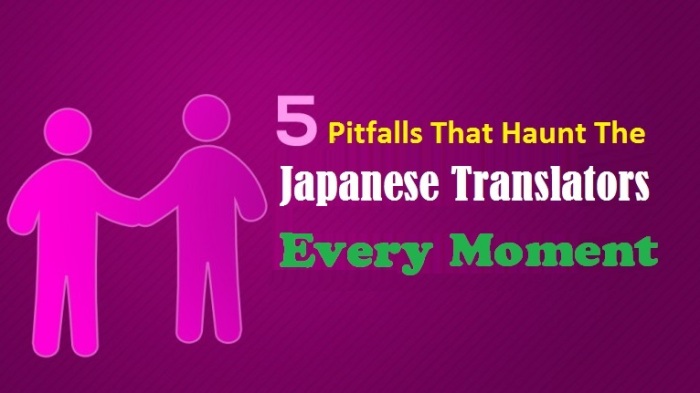 Mistakes are a part of life. But, it is the responsibility of the individual to learn from his mistakes and move ahead in his life and career. If we talk about a translator, he is the one responsible for bridging the gap between two languages. In case, he is the translator of a much demanded language, like Japanese, then he should remain alert at every step in his translation journey. However, as mistakes are bound to happen. Hence, some mistakes or pitfalls have been observed that constantly haunt the translators.
Mistakes are a part of life. But, it is the responsibility of the individual to learn from his mistakes and move ahead in his life and career. If we talk about a translator, he is the one responsible for bridging the gap between two languages. In case, he is the translator of a much demanded language, like Japanese, then he should remain alert at every step in his translation journey. However, as mistakes are bound to happen. Hence, some mistakes or pitfalls have been observed that constantly haunt the translators.
Grab a look:
1. Focusing On Every Word
This is typically the case with beginner translators, who feel that every word should be translated. They get involved into a literal translation, as they fear leaving some words for translation. For an authentic Japanese language translation, it must be understood that the language utilizes a number of classifying endings and other factors that need not to be translated, to make sure that a clear meaning is spread out.
2. Sticking To the Sentence Order
Again, this is one of the examples of a literal translation. To keep the order of the sentence, exactly same with the source text, translators don’t pay attention to the resulted sentence structure. Often, the meaning would not be disrupted. But, it is always better to translate the sentences in a pattern that is reader friendly to the target audience.
3. Overuse of Passive Voice
Translating the text excessively in the passive voice can lead to a poor translation. While translating Japanese into English or any other language, it is important that you understand the basic grammar facts of both the languages. Simply, the knowledge of the language will not do any benefit to you. You can use active voice for effective results.
[Must Read: 5 Fictional Languages Spoken By Popular Movie Characters ]
4. Not Being Concise
If you are not following precision and conciseness as the two major pillars for translation, then you are at risk. Describing a thought again and again or describing them in a discursive or lengthy manner, results into worthless translation. If you’ll be more concise, in what you say or translate, then the value of your translated content increases much better.
5. Clinging To the Topic Structure
Particularly, while translating into English, the inexperienced translators get stuck to the topic structure. The topic-subject pattern followed in the Japanese discourse has no or very little place in the English texts. For a translator, it is necessary to identify and understand the role of grammar in the topic and use it appropriately in the English sentence.
[Also Read: 6 strategies in Japanese Translation Services for E-Learning ]
Get a Reality Check Soon
These mistakes or pitfalls are not big enough that they cannot be eliminated. You can improve your mistakes by studying and practicing a bit. Further, a reality check is also important check, i.e. after, you have translated a portion of the assignment; just check the translation and think – does the translated text means exactly the same in the target language? This check will let you know the difference.